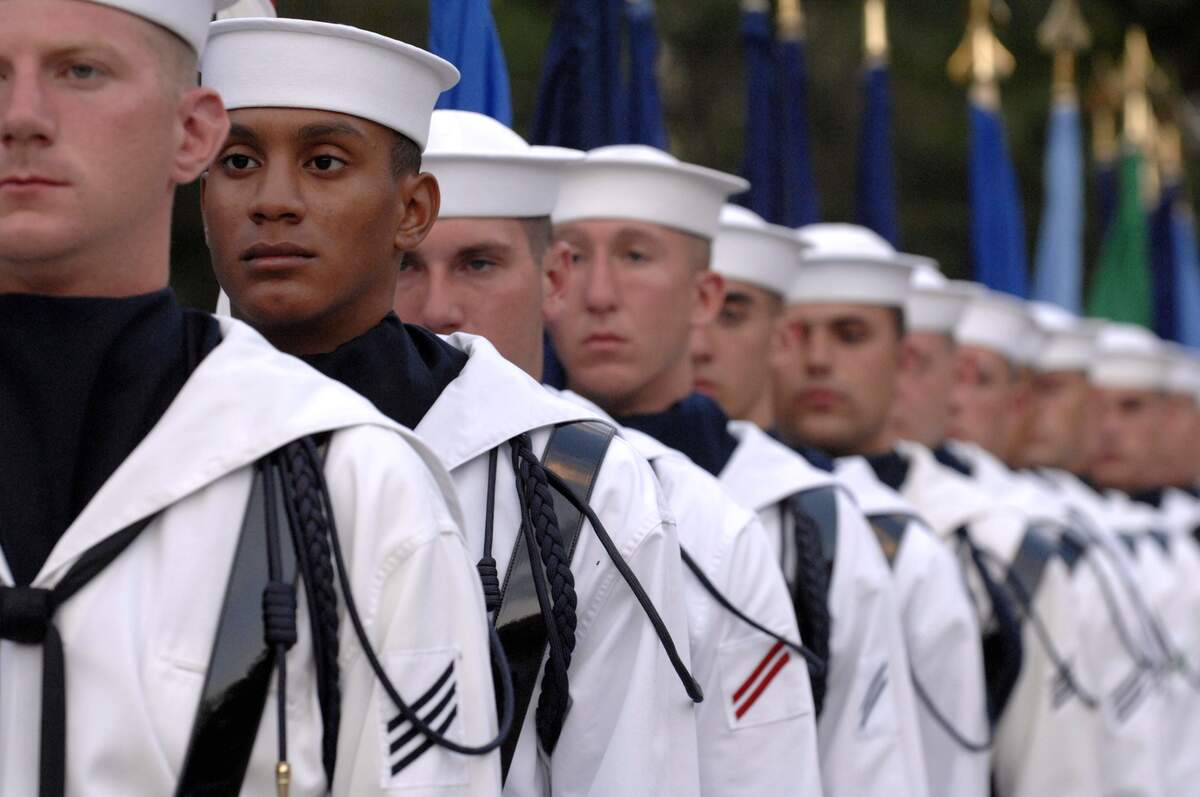

Navy Day
Observed
annually on October 27th (since 1922)
Dates
Founded by
Navy League of the United States in 1922
Hashtags
Sources
https://afd.defense.gov/History/Navy-Day/
https://en.wikipedia.org/wiki/Navy_Day#United_States
https://www.amazon.com/dp/1598888587?tag=checkiday08-20
https://www.military.com/navy-birthday/the-two-navy-holidays.html
https://www.anrdoezrs.net/links/100298379/type/dlg/https://www.newspapers.com/image/332736201/
https://www.anrdoezrs.net/links/100298379/type/dlg/https://www.newspapers.com/image/332736250/
https://www.presidency.ucsb.edu/documents/letter-navy-day-0
https://www.presidency.ucsb.edu/documents/message-the-birthday-theodore-roosevelt-and-its-celebration-navy-day
https://www.presidency.ucsb.edu/documents/proclamation-2815-navy-day-1948
https://www.presidency.ucsb.edu/documents/tribute-navy-day
Navy Day, established in 1922 by the Navy League of the United States, gives recognition to naval service, commemorating and honoring those who have served and currently serve in the United States Navy. The date of October 27 was chosen because it is the birthday of President Theodore Roosevelt, who had been an Assistant Secretary of the Navy, a proponent of a strong Navy, and a supporter of the creation of a Navy Day. The day also honors him. It is one of two Navy-related holidays, the other being The US Navy's Birthday, observed on October 13, which commemorates the day in 1775 when the Continental Navy was established by the Continental Congress, with the decision to purchase two armed ships.
In the advance of the first Navy Day, President Warren G. Harding wrote the following to Secretary of the Navy Edwin Denby:
Thank you for your note which brings assurance of the notable success which seems certain to attend the celebration of Navy Day on Friday, October 27, in commemoration of past and present services of the Navy. From our earliest national beginnings the Navy has always been, and deserved to be, an object of special pride to the American people. Its record is indeed one to inspire such sentiments, and I am very sure that such a commemoration as is planned will be a timely reminder.
It is well for us to have in mind that under a program of lessening naval armaments there is a greater reason for maintaining the highest efficiency, fitness and morale in this branch of the national defensive service. I know how earnestly the Navy personnel are devoted to this idea and want you to be assured of my hearty concurrence.
The October 27, 1922, edition of Washington, D.C's The Evening Star stated that "Here and throughout the nation the American people are holding in grateful remembrance the historic deeds of the United States Navy, as they observe with fitting ceremonies the day set aside by the Navy League, with the approval of the Navy Department, and the Navy's own." They went on to say that "wherever 'Navy Day' was observed, there also was the name of Roosevelt honored."
The formal observance of the day in Washington, D.C. began when Secretary Denby laid a wreath on The Tomb of the Unknown Soldier in Arlington National Cemetery, which was followed by a moment of silence. Later, there was a parade from the new Navy building to the statue of John Paul Jones at the foot of 17th Street. That night, Secretary Denby and others spoke at the annual banquet of the Navy League at the Willard Hotel.
In New York City, according to The Evening Star, the Navy's Atlantic fleet was positioned in the Hudson River on the day. The city's festivities were a "celebration paying homage to the sea forces of the nation and commemorating the birthday anniversary of one of her most illustrious sons—the late Theodore Roosevelt." Flags, flowers, parades, addresses, cheers, and tears honored the Navy and Roosevelt. New York Navy Yard was made open to the public, and visits were also made to Roosevelt's childhood home on East 20th Street, and to his grave at Oyster Bay. Programs in New York City in honor of the day were broadcast by radio throughout the nation, including speeches by Captain Luther M. Overstreet and Rear Admiral H.S. Knapp, the singing of sailor songs and classical selections, piano performances, and a concert from the United States Marine Band.
For the first observance, there were additional addresses across the country, both in person and on the radio. For the second year, more than 50 major cities took part in celebrations, and the United States Navy sent ships to a number of port cities. The celebration in 1945 was particularly large and included President Harry S. Truman reviewing the fleet in New York Harbor as it returned from victory in World War II.
Navy Day was officially observed in the 1920s, '30s, and '40s, and there were a number of presidential proclamations that were issued in its honor. The last official observance took place in 1949. That year, Secretary of Defense Louis A. Johnson, the second secretary since the creation of the department, directed the celebration of the Navy to be part of Armed Forces Day. That new holiday did away with officially celebrating days dedicated to the Army, Navy, and Air Force, although Navy Day has continued to be observed unofficially. Being that the Navy League was a private civilian organization, it wasn't affected by the directive and continued to organize Navy Day celebrations on October 27.
How to Observe Navy Day
- Thank any Navy servicemembers you know for their service.
- Lay a wreath on the grave of any Navy servicemembers you knew.
- Check if any official or unofficial Navy Day events are taking place near you or elsewhere that you can attend.
- Visit Theodore Roosevelt's childhood home and grave.
- Read a book about Theodore Roosevelt.
- Read a book about American naval history.
- Visit the National Museum of the US Navy or visit and tour the USS Constitution, one of the Navy's original frigates, and the world's oldest commissioned naval warship.
- Join the United States Navy.





















